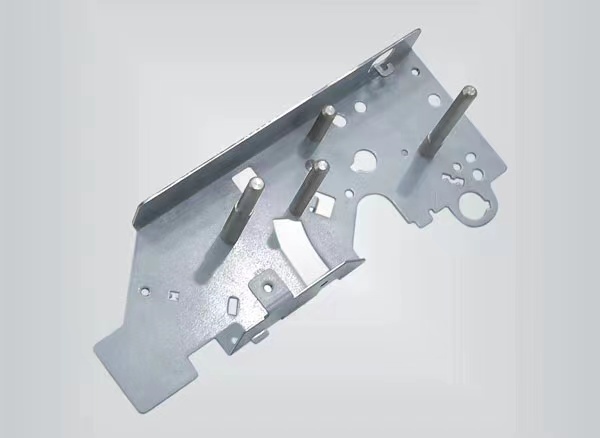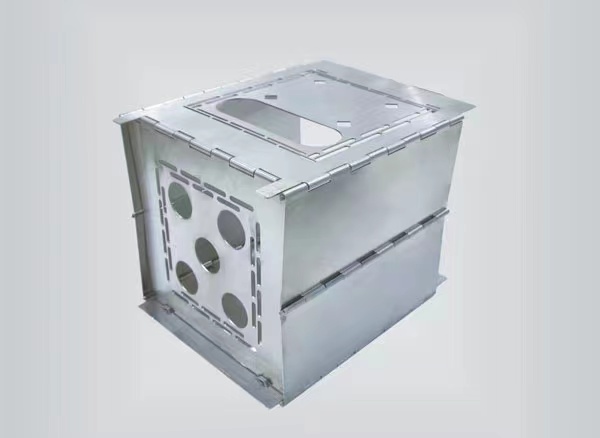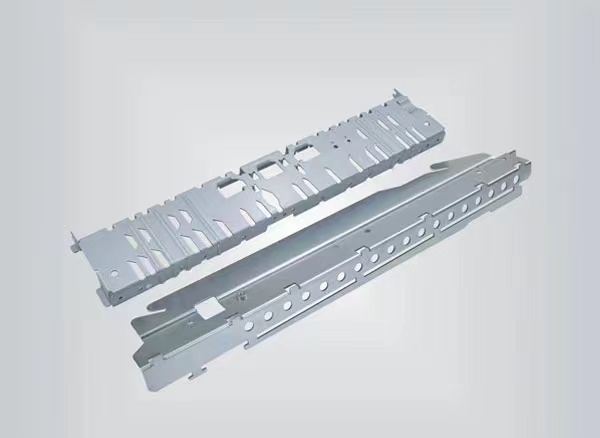Sheet metal process is a comprehensive cold working process for sheet metal, including cutting, punching/cutting, hemming, riveting, splicing, forming, etc.

First, the main process
1. Cut the material
• Shearing machine cutting: The use of shearing machine to cut the metal sheet according to the design size.
• Laser cutting: High-energy laser beam irradiates the metal sheet, making the metal sheet locally melt and vaporize, so as to achieve precision cutting.
2. Stamping
• Use punches and molds to punch, blanking, stretching and other operations on metal sheets to obtain specific shapes and sizes.
3. Bend
• The metal sheet is folded into various angles and shapes according to the design requirements by the bending machine.
4. Welding
Common welding methods include argon arc welding, carbon dioxide gas shielded welding, etc., which is used to connect multiple sheet metal parts together.
5. Surface treatment
• Spraying: the sheet metal parts are coated with various colors to play a role in corrosion prevention and aesthetics.
• Electroplating: such as zinc plating, chromium plating, etc., to enhance the corrosion resistance and decorative metal.
Second,Application field
1. Electronic and electrical industry
• Chassis, cabinet, control panel, etc
2. Automobile manufacturing
• Body coverings, frame structures, etc
3. Mechanical equipment manufacturing
• Shell, protective cover, operating table, etc
Thirnd,Advantages
1. High strength
• Sheet metal can have high strength and stiffness after proper processing.
2. High precision
• Modern sheet metal processing equipment and technology enable high-precision dimensional control and shape processing.
3. Be flexible
• Various complex shapes can be processed according to different design requirements.
Fourth,low cost
• Compared to other metal processing processes, sheet metal processes have certain advantages in terms of materials and processing costs.
But sheet metal processing accuracy requirements are also relatively high, the following is to improve the bending accuracy of sheet metal process methods:

1. Equipment
① choose high precision bending machine
• Ensure the mechanical structure of the bending machine is stable, high precision and good repeated positioning accuracy. For example, the choice of advanced CNC bending machine, you can precisely control the trajectory and pressure of the slider.
• Regular maintenance of the bending machine, check the wear of each part, timely replacement of damaged parts, to ensure that the equipment is always in good working condition.
② high-quality bending mold
• Select bending molds with good quality and high precision. The mold material should have high hardness, high wear resistance and good toughness to ensure long-term use without deformation.
• According to different plate thickness and bending Angle, choose the appropriate mold type and specification. For example, for thinner sheets, a cutlass die with a smaller Angle can be used to improve bending accuracy.
• Check and maintain the mold regularly, repair the worn mold in time, and ensure the accuracy and service life of the mold.
2.Process
① Reasonable process parameter setting
• According to material, thickness, bending Angle and other factors, reasonably set the pressure, speed, pressure holding time and other process parameters of the bending machine. The parameters can be adjusted continuously by the method of trial folding to achieve the best bending effect.
• For the bending parts with complex shapes, the method of step-by-step bending can be used to fold the blank shape first and then fine-tune it to improve the bending accuracy.
②accurate plate measurement and positioning
• The size of the sheet should be accurately measured before bending to ensure that the length, width and thickness of the sheet meet the design requirements. High-precision measuring tools such as calipers and micrometers can be used.
• Ensure accurate plate positioning during bending. Tools such as positioning clips or dowel pins can be used to hold the sheet in the correct position to avoid displacement when bending.
③Control bending radius
• Select the appropriate bending radius according to the material and thickness of the plate. Bending radius is too small, easy to cause plate cracking; If the bending radius is too large, the accuracy and aesthetics of the bending parts will be affected.
• The bending radius can be controlled by adjusting the clearance and pressure of the bending die. In the bending process, it is necessary to observe the deformation of the plate and adjust the process parameters in time to ensure that the bending radius meets the requirements.
3. Personnel
1. Train operators
• Provide professional training for bending machine operators, so that they are familiar with the operation method of bending machine, process parameter setting and mold selection.
Post time: Oct-17-2024
